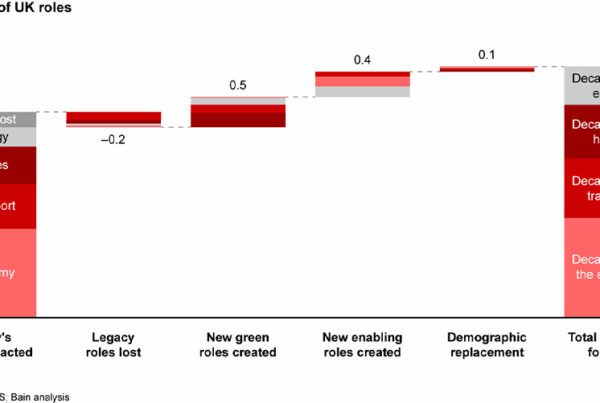Global strategy and management consulting firm McKinsey & Company has unified the artificial intelligence teams from its 100+ offices worldwide under the one banner – QuantumBlack.
In a rare example of a much smaller company’s identity and branding surviving over the post-acquisition long run to a powerful parent, McKinsey & Company’s 2015 data analytics pick up QuantumBlack has now become the consultancy’s official, unified artificial intelligence (AI) arm.
What started with around 30 data scientists, engineers, and designers joining the firm in London, is now a global community of more than 1,000 practitioners.

“Many times, acquisitions melt quietly into the parent company. This isn’t the case for QuantumBlack,” the firm stated, with Alexander Sukharevsky, QuantumBlack’s global co-leader alongside Alex Singla, adding; “When we talk about helping our clients achieve sustainable and inclusive growth, AI is naturally part of the conversation. It’s transforming all businesses, including the way we as McKinsey serve organisations.”
Founded in 2009 and originally making its name by applying data science to help Formula 1 teams gain performance advantages, QuantumBlack soon applied its nous across a variety of industries, including the transport, healthcare and energy sectors among others.
Yet the business hasn’t entirely lost sight of its sporting roots since joining McKinsey, with its team having supported Emirates Team New Zealand’s recent America’s Cup defence.
One of the leaders of that project, which employed deep reinforcement learning to build an army of interconnected AI bots to run sailing simulations at a fraction of human-time, was former QuantumBlack European COO Helen Mayhew, who now leads its operations in Australia. Regionally, QuantumBlack has also launched outlets in Singapore and Tokyo, with its global headcount growing from 400 to 1,000 in just the past two years.
The next chapter
Now, the firm says, the unification of its analytics teams under the one umbrella – to “share a single culture using common methods and tools” – marks a new chapter for QuantumBlack. The firm however says the approach will remain the same, blending human ingenuity and domain expertise with innovative technologies to solve complex problems. Sukharevsky; “We call it hybrid intelligence, and it starts from day one on every project.”
FOTO: Alexander Sukharevsky and Alex Singla. https://www.mckinsey.com/business-functions/quantumblack/how-we-help-clients
To mark the evolution, the team from QuantumBlack engaged AI artist Sougwen Chung to create a painting that captures the hybrid intelligence concept, one which will form the basis for QuantumBlack’s new visual identity. For the project, its data scientists processed data from a river to train its CausalNex machine learning model, which then guided the movement of two robotic arms that painted alongside Chung; humans and tech working together.
McKinsey contends that one of the offering’s differentiators is the assets created by QuantumBlack Labs, its design-house which builds innovative products pushing the boundaries of AI, which it intends to significantly expand next year. “We want to become a magnet for the best technologists in the world and create assets that bring together all of our knowledge, so we can take this to our clients,” said senior partner Matt Fitzpatrick, the co-leader of QuantumBlack Labs.




